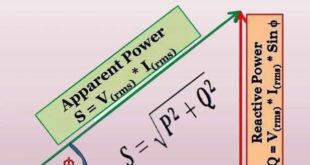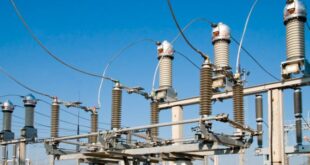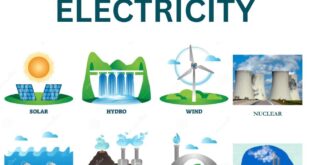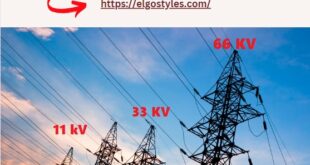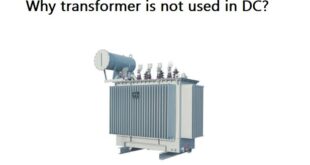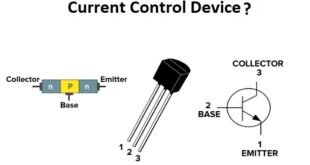Electrical Power – Its Types and Units Introduction Electrical power is a fundamental concept that plays a pivotal role in modern society. From lighting our homes to powering vast industries, electrical power has become an indispensable part of our daily lives. In this article, we will explore what electrical power …
Read More »Electrical Distribution Substation
Electrical Distribution Substation: The Nerve Center of Power Delivery In the intricate web of electrical infrastructure, distribution substations play a pivotal role, serving as the critical juncture where high-voltage electricity is transformed and distributed to end-users at manageable voltages. These often inconspicuous yet indispensable facilities are the backbone of modern …
Read More »Does a Ceiling Fan running at a slower speed consume less Power (Electricity Units)?
Answer: Yes, a ceiling fan running at a slower speed consumes less power (electricity units). Reasoning: Ceiling fans consume power based on their speed settings. Slower speeds require less energy to maintain, resulting in lower power consumption. This is because the fan’s motor operates at a reduced rate, resulting in …
Read More »Is the Power of Zero Watt Bulb really zero watts?
Answer: No, the power of a “zero-watt” bulb is not literally zero watts. Instead, it refers to a very low power consumption. These bulbs typically consume minimal energy, often less than a watt, hence the term “zero-watt.” However, they still have a small power rating, typically ranging from 0.5 to …
Read More »Common Electrical Faults and Their Causes
Common Electrical Faults and Their Causes Introduction Electrical systems are an integral part of modern life, powering everything from our homes to our workplaces and industries. However, like any other complex system, electrical systems are susceptible to faults and failures. These faults can range from minor inconveniences to major safety …
Read More »22+ Sources of Electricity
Sources of Electricity: A Dive into Power Generation Methods Introduction Electricity is an essential part of modern life, powering our homes, businesses, and industries. We often take it for granted, but understanding where our electricity comes from is vital for a sustainable and efficient future. Various sources of electrical power …
Read More »Why is transmission line 11KV OR 33KV, 66KV not in 10KV, 20KV, or 30KV?
Answer: Transmission line voltages like 11kV, 33kV, and 66kV are standard designations based on practical considerations, system requirements, and historical conventions. These values optimize efficiency, cost, and technical feasibility. Reasoning: System Compatibility: Standardizing transmission voltages promotes system compatibility, facilitating the interconnected operation of power grids and ensuring efficient energy transfer. …
Read More »Can voltage be lost as heat?
Answer: Yes, voltage can be lost as heat due to resistance in a conductor. -= Can voltage be lost as heat Reasoning: Voltage is the electric potential difference that drives the flow of electric current. When current passes through a conductor with resistance, such as a wire, some energy is …
Read More »Why transformer is not used in DC?
Answer: Transformers are not used in direct current (DC) systems because they rely on the principle of electromagnetic induction, which requires a changing magnetic field to induce voltage and current in the secondary winding. In a DC system, the current flows in a constant direction, creating a steady magnetic field …
Read More »Why DC current is used to charge batteries, not AC?
Answer: DC current is used to charge batteries because batteries are designed to store direct current (DC) energy. Charging them with alternating current (AC) would require additional components like rectifiers, making the process more complex and less efficient. Reason: DC (direct current) is preferred for charging batteries due to its …
Read More »Why is a Transistor Called a Current Control Device?
Answer: A transistor is called a current control device because it regulates the flow of electric current between its terminals by using a small input current to control a larger output current. This property is essential for its role in amplification, switching, and signal processing in electronic circuits. Reasoning: A …
Read More » Electrical Engineering World Wiring a Brighter Tomorrow!
Electrical Engineering World Wiring a Brighter Tomorrow!
